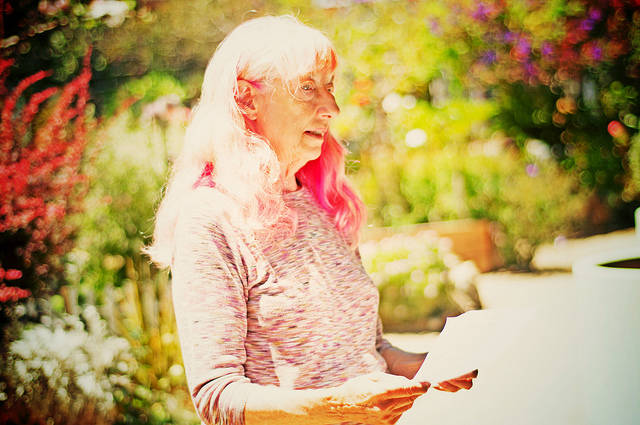
Tips for creating a thoughtful eulogy
Posted by AK Lander | On November 14, 2013 11:29
Create a touching and thoughtful tribute to a loved one with these top tips for writing a eulogy
A eulogy is considered to be one of the essential funeral readings, alongside poems and favourite passages from speeches or stories. As one of the most personal parts of a funeral before a loved one is committed to the earth and forever honoured with their personalised headstone, writing a eulogy is a difficult but worthwhile task.
By following these tips for writing a eulogy, even the pressure of doing so and the high emotion of a funeral will not stop the end result being a thoughtful and touching part of the service.
Image credit: dotmatchbox (flickr.com)
Start with the audience
Think about who will be attending when you come to start writing the eulogy. Some stories may only be appropriate for close family and friends, whilst others may not be suitable for the family. Keeping this in mind when making decisions about what to include should ensure that no mistakes are made.
Keeping in mind who attends the funeral can also help when choosing what things definitely need to be said as part of the eulogy. A eulogy celebrates the life that was led by the deceased, so try to include some of the good times and personal characteristics that brought happiness to others. Although grief is intimate, the life of a loved one was shared by many, so try to include references to a characteristic that everyone knew. Something like this can make people smile as they recall their own memories of how that person was special to them.
Keep it brief and organised
A eulogy is sure to be an emotional speech to hear as well as deliver, so a few minutes should be enough to deliver a suitable one. Keeping it organised is a good way to ensure that a eulogy does not become overly long and muddled, so try to cover a few main things: the big achievements in their life, small habits or personality traits that everyone knew them for, what made them happy, how they dealt with challenges and, if you wish, how you personally felt about them.
As with any piece of writing, the beginning and end of a eulogy can be hardest. Writing the middle part and working out the beginning and end afterwards is a useful way to actually start getting things down on paper.
There are plenty of options in terms of how to structure the middle section of the eulogy, including: chronologically, reverse-chronologically, themed and a three-point plan. The first two are good for covering how a person grew and changed throughout their life, whilst the second two are best for focusing on certain characteristics about a person. This could be their role as a parent, their passion for a hobby or the differences they made to other people – essentially, whatever people will fondly remember them for in years to come. If in doubt, take a look at some eulogy examples and see how different structures lend themselves to the overall eulogy.
Playing a piece of music or reading a poem is a popular way of ending a eulogy and the reasons for including a specific piece can be a fitting end to the speech. Alternatively, a short sente
